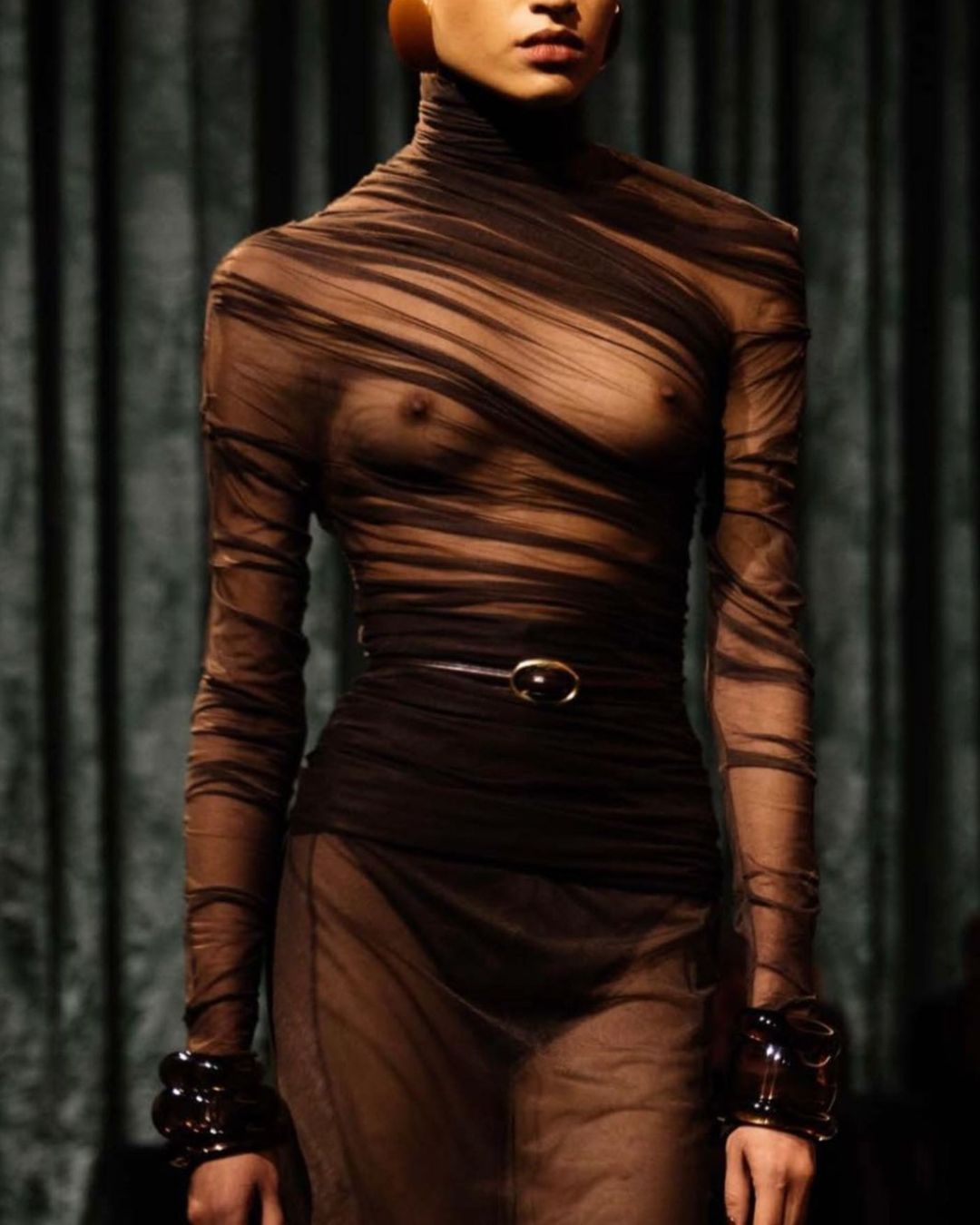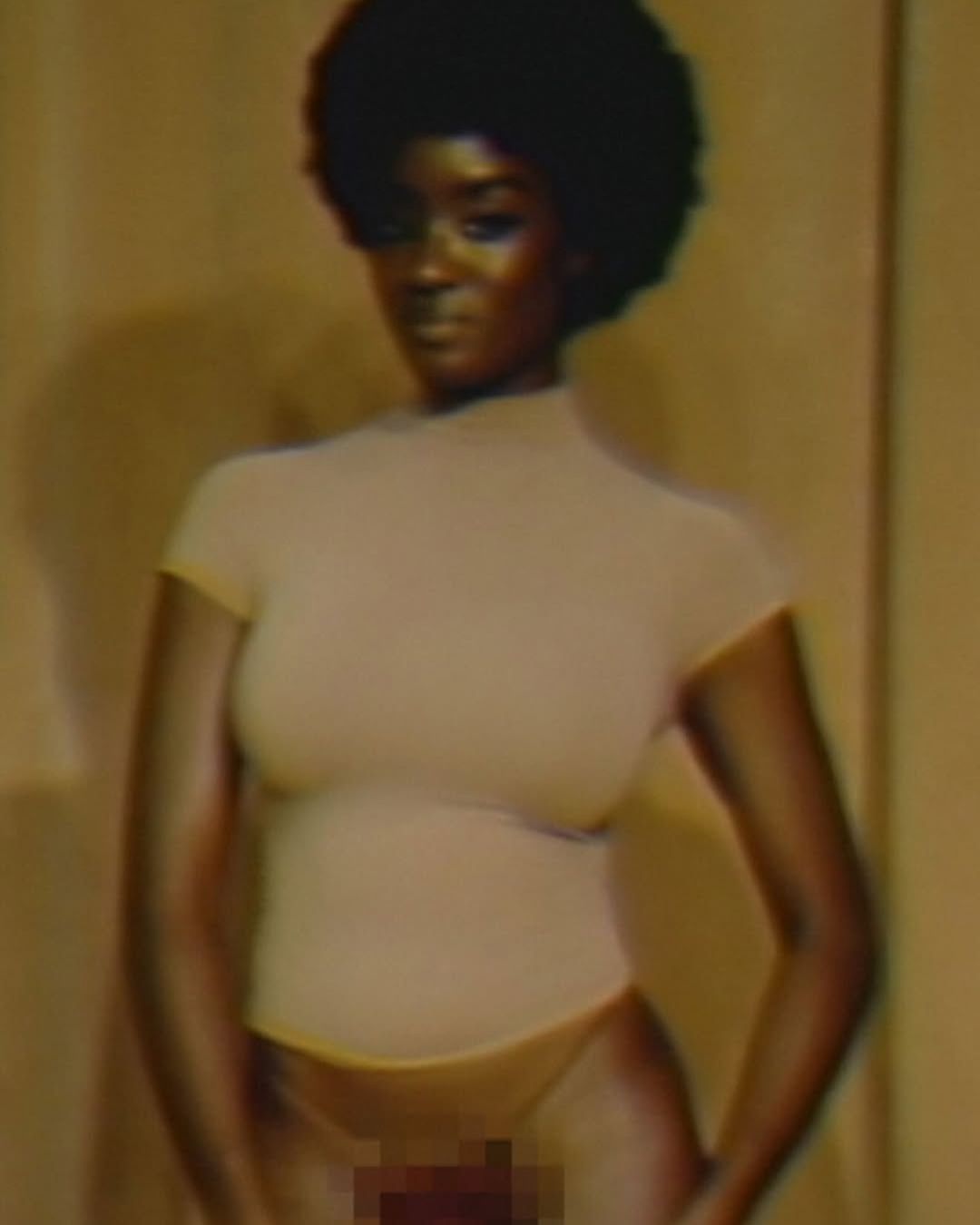
Even in fashion, female breasts are a battleground Is nudity the only way to free ourselves?
Back when revealing an ankle was scandalous, when the norm was to cover up and conceal one's charms, when the breast was seen solely for sexual gratification of men (or for infants), yet breastfeeding in public was deemed somewhat indecent, perhaps exposing the female breast could be considered transgressive, novel, revolutionary, a way to express one's sexuality against all odds, risking one's reputation and facing added difficulties in finding a husband. Fashion, in this sense, has always been ahead: it led women to rediscover their bodies, aided them in self-discovery, showed them the way. But with caveats. In doing so, it primarily catered to an unrealistic idea of womanhood, ultra-thin, marvelous, which barely exists in reality. Now that even this has grown old, does this notion of female nudity risk circling back and becoming almost reactionary?
Nudity in Fashion: Vanessa Friedman's Words
This is what fashion journalist Vanessa Friedman for the New York Times observes and argues, specifically referencing the Fall/Winter 2024-2025 runway show by YSL held a few days ago in Paris, where models strutted in sheer nylon garments. "Let's set aside the impracticality of a dress made of stockings, or who would even want to wear it. In this 21st-century moment, such transparency seems merely a tired and clichéd form of misogyny masquerading as fashion provocation. A particularly ill-conceived notion, especially considering how politics is handling women's bodies. They are already treated as objects, do we need further objectification?" She continues: "Transgression demands something more nuanced than a nearly bare breast. All this exposure, as a result, only highlights how thin the models are." Equally harsh words are reserved for Maria Grazia Chiuri's operation at Dior, which according to Friedman turns women into walking billboards for the brand and its inspirations, demonstrating how superficial adherence to the feminist cause is never effective, from any perspective.
Does Nudity Set Us Back Instead of Moving Forward?
Fashion moves forward and then backward, seamlessly. It operates in cycles, innovates and preserves, transgresses and then recoils, uses liberating and social impulses to entrap us in its elitist world, plagiarizes and pillages, vacates, falls into hypocrisy. Now, at least since the controversial quiet luxury onwards, it seems to be stepping backward, opting for safe tropes, retreating into its den. To not lose ground, after all, it must delicately balance novelty, emotion, and customer satisfaction, maintaining sales. Yet, some argue that this conservatism also stems from the times, politics, society: it's impossible to divorce clothing from self-communication, elite tastes, from what it means to be wealthy and powerful right now. To understand why certain trends prevail, we must seek our answers in sociology, anthropology, in the organization of an increasingly disordered world. In this climate, how do we discern which nudity is empowering and which is objectifying? What is hypocrisy and what is genuine adherence to an ever-pressing issue, that of female liberation in a world that prefers silent mothers? It's a good question, one that will remain unanswered. At least for now.
Beyond the Fashion World: The Issue of the Female Breast
Even stepping momentarily out of the fashion world - which exists in a bubble above our heads, distant and largely incomprehensible and non-priority for the common folk, whose effects are felt a season or two later in fast fashion stores, in the everyday life that prevents us from flaunting runway looks - we notice how the female breast remains a subject of debate. If it's too covered, it's a problem, if it's too revealed, also. If in fashion nudity is outdated, in the world it's still viewed with discomfort. Instagram censors female breasts, Kim Kardashian sells us a round bra that gives us the breasts of an augmented Barbie complete with nipples, yet conveniently hides them entirely. Perhaps the main difference lies in the ways and means of exposure, in the bodies that are protagonists, in the contexts in which it occurs. YSL's runway show, in its world of privilege and sparkles, evidently, missed the mark.
























































